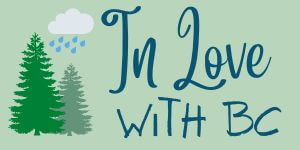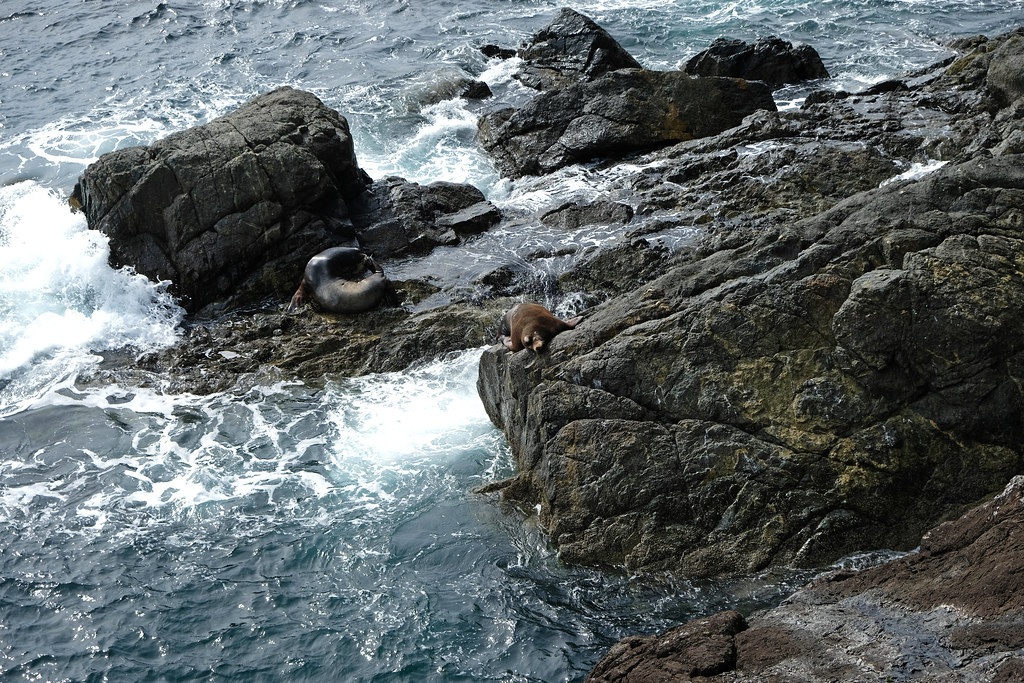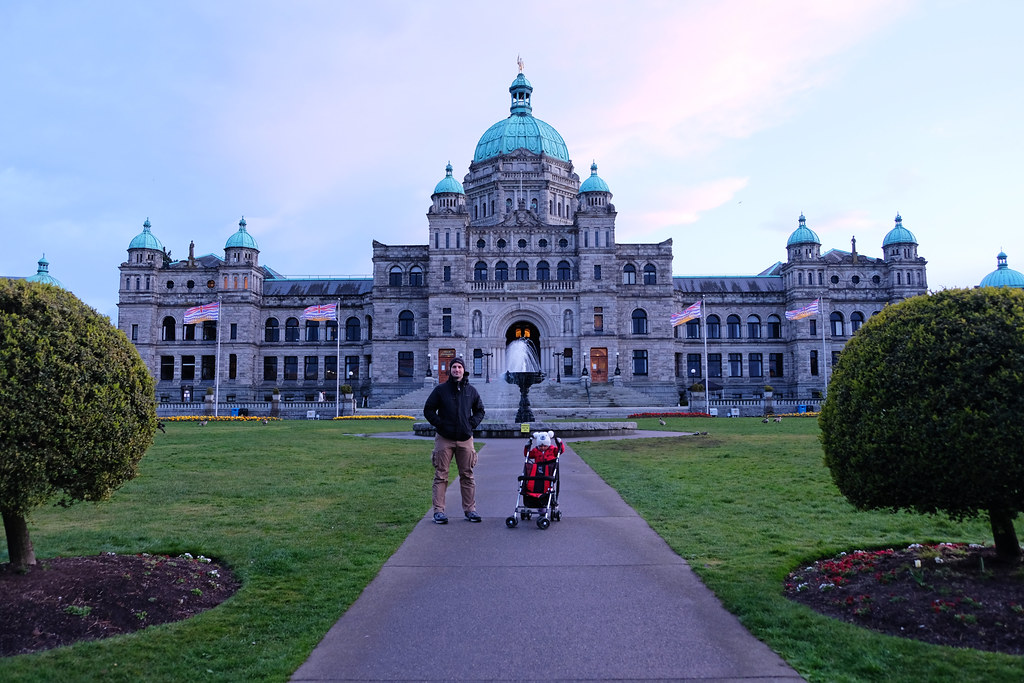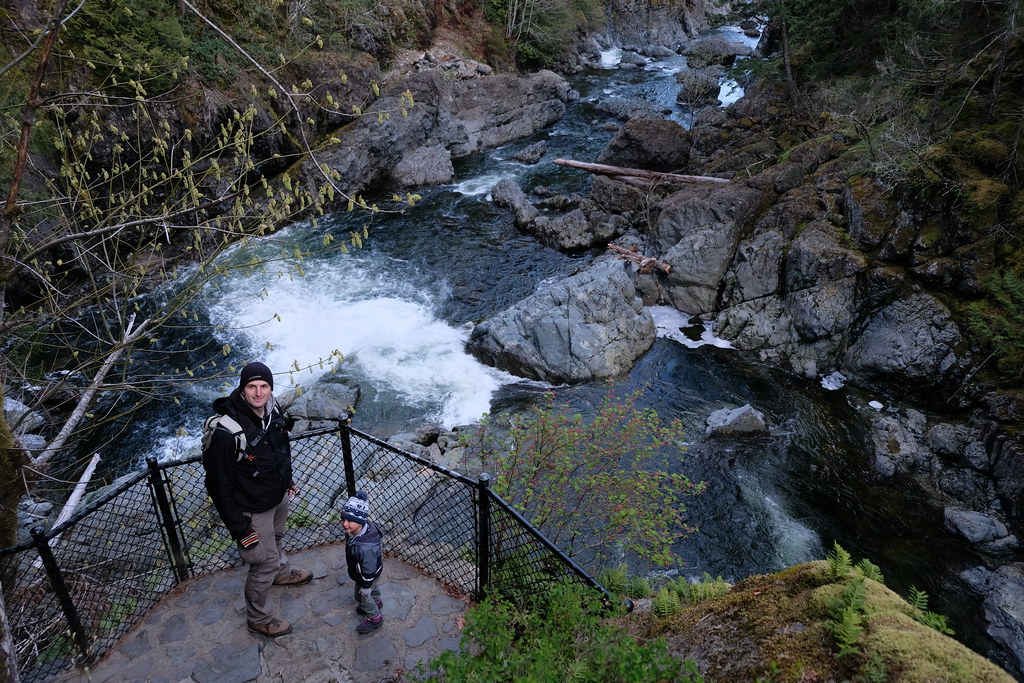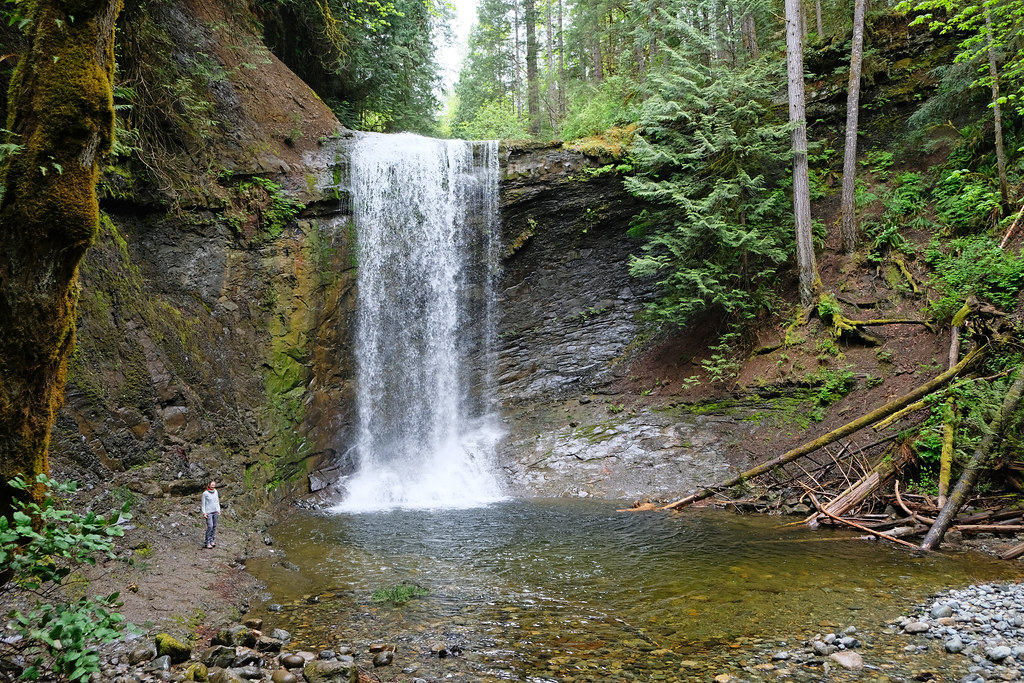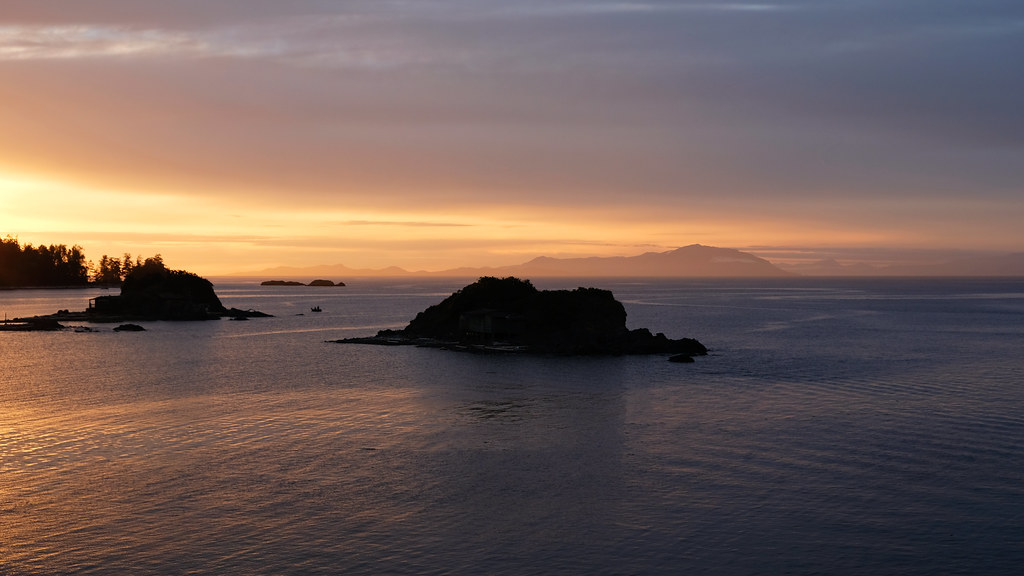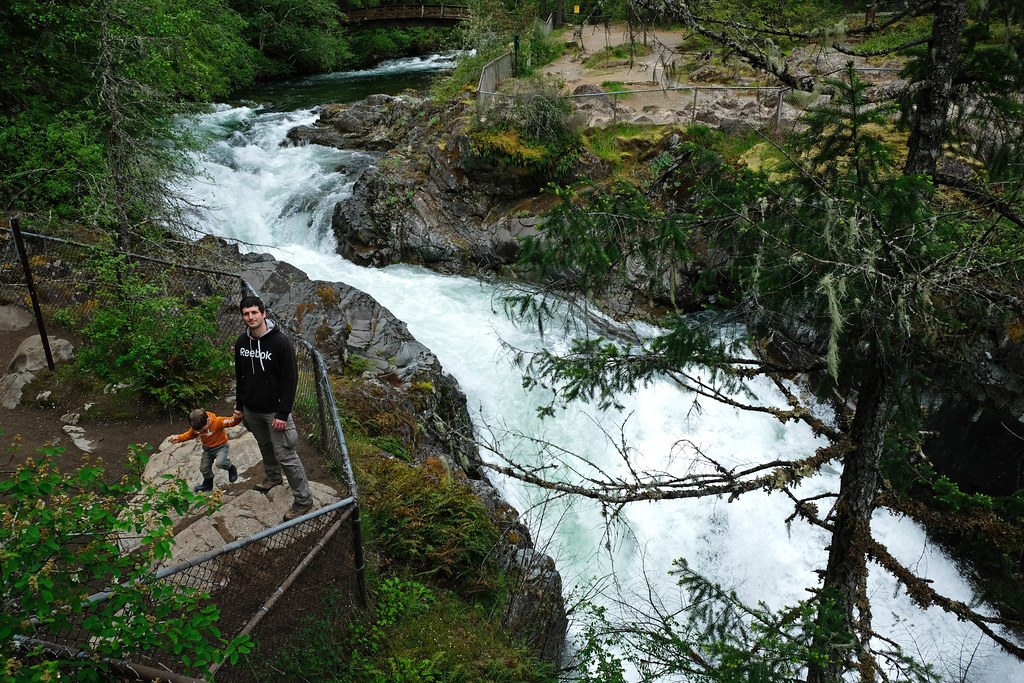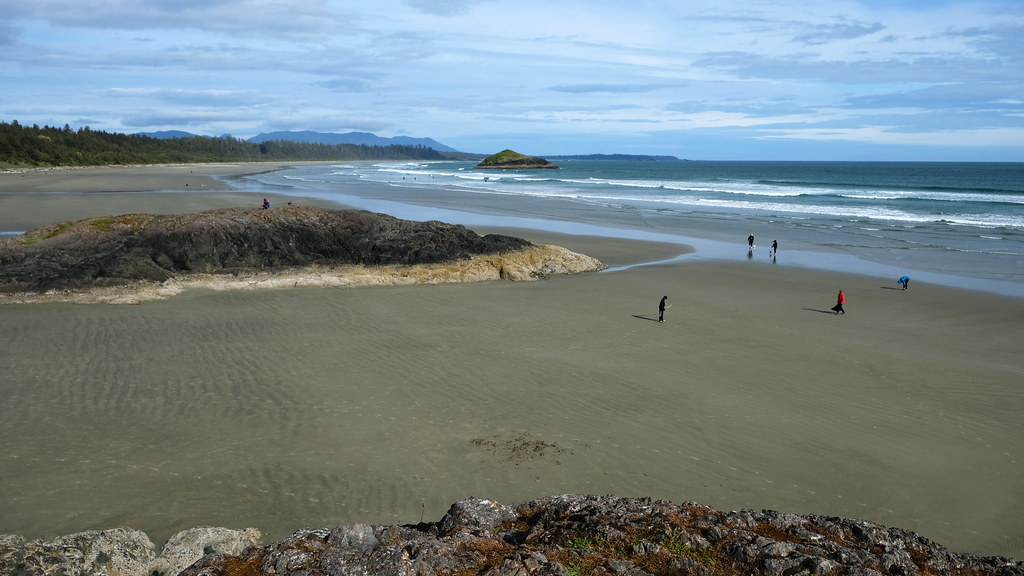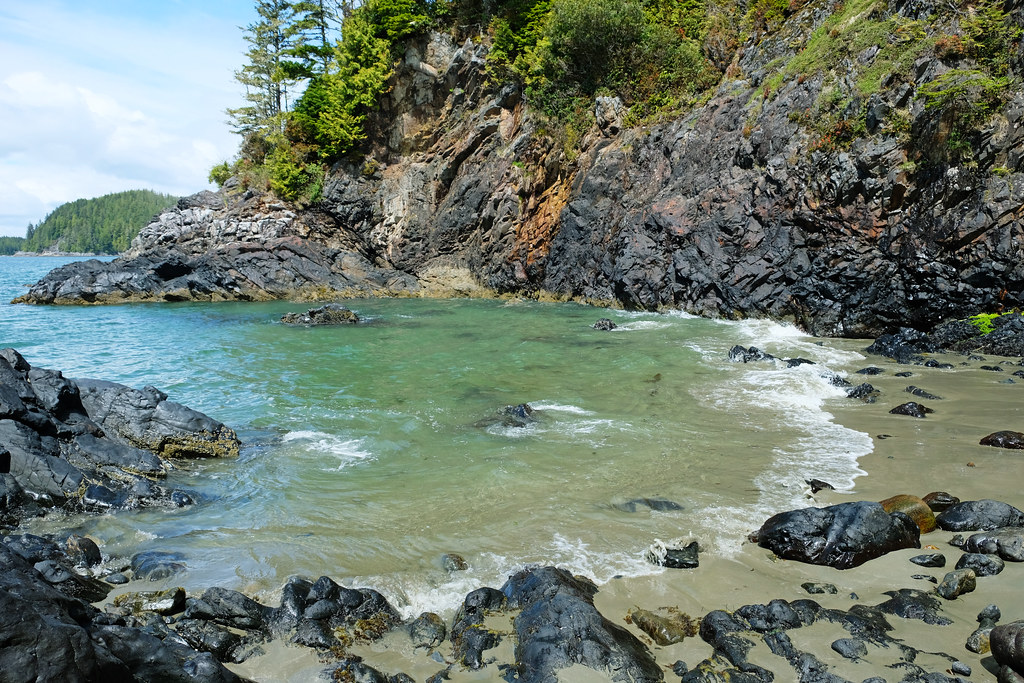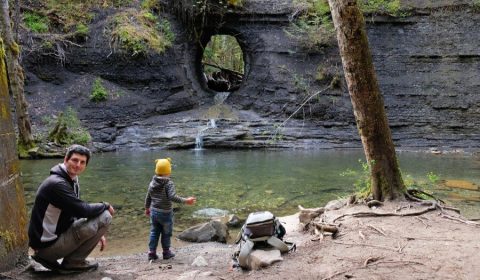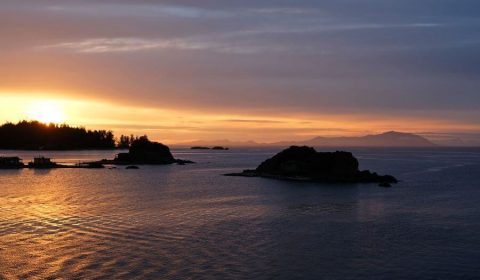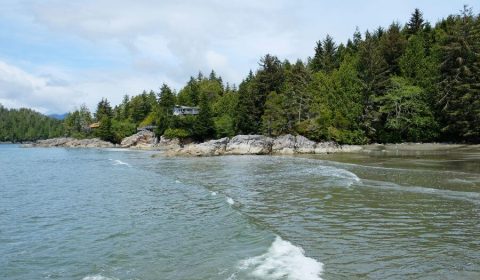Vancouver Island seems like the perfect weekend getaway from Vancouver. The only reason it isn’t is because you need much more than a weekend to explore it. This 5 days Vancouver Island road trip itinerary just gives you a taste of what this large, beautiful island has to offer.
“A 5 day Vancouver Island itinerary?! That’s enough for close to nothing” – I hear my local friends protest, and I partly agree. Because Vancouver Island is home to so many natural treasures, and so many of them are in isolated regions that require time and effort to reach. Surely, Vancouver Island would keep nature lovers busy for months (and years). But still, 5 days on Vancouver Island is much more than nothing, especially if you plan your route carefully. And if you drive, because having a car to explore the island is essential.
Don’t just visit BC. Experience it.
Discover BC’s hidden gems and breathtaking routes without the planning headache. Your perfect road trip is just a click away.
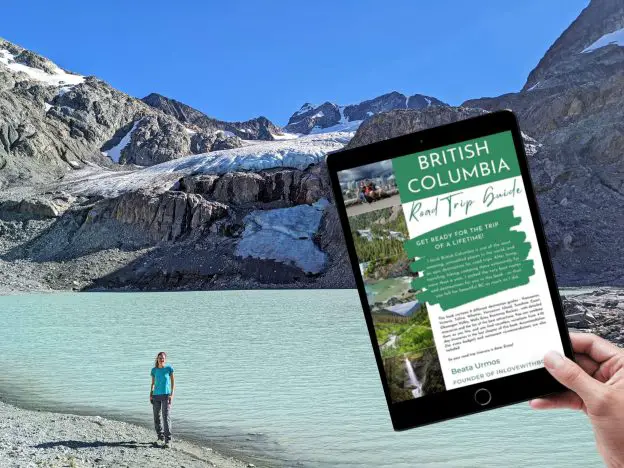
And I decided to keep this Vancouver Island itinerary 5 days long, because most people who start their Canadian road trip from Vancouver have only a few days for Vancouver Island – if any. It’s a great first-timers’ itinerary that includes the highlights.
Could you guess how long it takes to drive around Vancouver Island, anyway? It takes about 7 hours to drive Vancouver Island from tip to toe, and then you don’t even visit anything on the western coast. It’s a huge island, with several isolated attractions. The goal of this itinerary is not to see everything, but to enjoy some of the most wonderful Vancouver Island attractions.
5 days Vancouver Island road trip summary
Day 2: Victoria to Port Renfrew
- Sooke Potholes Provincial Park
- Mystic Beach
- Sombrio Beach
Day 3: Port Renfrew to Nanaimo
- Fairy Lake
- Lake Cowichan
- Nanaimo
- Little Qualicum Falls Provincial Park
- Cathedral Grove
- Pacific Rim Nature Reserve
- Cox Bay
- Tofino (Clayoquot Sound & Tonquin Trail)
- Wild Pacific Trail
Which is the best time to visit Vancouver Island?
Vancouver Island has mild winters – by Canadian standards -, and it’s a year-round destination for outdoor lovers. However, the weather between November and April can be extremely rainy and quite chilly. Snow is rare on the coast, but torrential rains are common.
Summer is a busy time, but you’ll enjoy the warmest weather and long days, perfect for camping and spending lots of time outdoors. You need to think about the activities you’d like to do to be able to decide which is the best time for your Vancouver Island road trip.
This Vancouver Island 5-day itinerary has lots of outdoor activities and is optimized for the summer (between May and September).
How to get to Vancouver Island?
Vancouver Island has no bridges, so you either take the plane, the seaplane from Vancouver (quick, expensive and very scenic!) or the ferry to get there. Then you road trip Vancouver Island, because that’s the way. Driving around is surely the most flexible, most convenient and quite often the only way to get to places.
Most people take the ferry, and that’s what we suggest, as well, if you’re taking your car. There’s a ferry line from Tsawwassen (Metro Vancouver) to Swartz Bay (Victoria), one from Tsawwassen to Nanaimo and one from Horseshoe Bay (West Vancouver) to Nanaimo. The ferry is operated by BC Ferries – see sailing schedules and prices here.
5 days Vancouver Island itinerary
So let’s see what to do on Vancouver Island if you have 5 days:
Day 1: Victoria
Victoria is the provincial capital, and – being on the southern tip of Vancouver Island – it’s a great place to kick off your road trip. Named after British Queen Victoria, it certainly has more “old England charm” than any other cities in British Columbia. Its historical center is very walkable, and the scenery is breathtaking.
It’s one of the best places to visit on Vancouver Island, and thanks to its easily accessible location and pleasant number of sights (there are sights, but not too many), it fits into even the shorter Vancouver Island road trips.
Best things to do in Victoria:
- Go whale-watching. Vancouver Island is one of the best places in the world for whale-watching, and tours depart from Victoria’s Inner Harbour several times every day. Whale migration is between March and October, that’s when you can see humpback whales, minke whales and grey whales. You have a chance to see orcas, dolphins, and seals any time of the year. I recommend either starting or finishing your day in Victoria with a whale-watching tour. (Sunset whale-watching trips can be stunning!)
- Visit the Butchart Gardens, Canada’s most fabulous garden, with over 900 different plants, grouped in thematic gardens and changing with the seasons.
- Take a walk in the Inner Harbour, one of the most scenic harbours in the world.
- Explore the Fisherman’s Wharf, a group of floating homes and restaurants connected by wooden boardwalks.
- Find the best architecture by strolling the streets between Chatham Street, Humboldt Street, Douglas Street and the Fisherman’s Wharf.
- Have an afternoon tea at one of the oldest hotels in Canada, the Fairmont Empress Hotel – you bet they do it in style.
- Visit the majestic Parliament Buildings, and walk around the grounds: the Front Fountain, Knowledge Totem Pole, the giant Sequoia Tree and the Premier’s Rose Garden.
- Visit the Royal BC Museum to learn about BC’s natural and human history in an exciting way.
Best accommodations in Victoria:
- Luxury: Fairmont Empress Hotel (top location)
- Mid-range: Beaconsfield Bed and Breakfast
- Budget: James Bay Inn Hotel, Suites & Cottage
Day 2: Victoria to Port Renfrew
Continue your Vancouver Island trip towards Port Renfrew. This is a typical wonderful road trip day, including ~110 km of driving and some of the most famous natural beauties of the southwest coast of Vancouver Island. Wild, long, windswept sandy beaches, pretty beach waterfalls and ancient temperate rainforests make this coastline unforgettable.
Sooke Potholes Provincial Park
Sooke Potholes Provincial Park is famous for “the potholes”: the deep rock pools which were naturally carved into the bedrock of the Sooke River by glacial activities. It’s one of the most unique places to visit on Vancouver Island without getting too far from Victoria.
It’s a popular swimming spot in the summer. But the water doesn’t get warm, so don’t expect to soak in a hot tub, it’s not that kind of experience. Jump in for a refreshment on a hot summer day.
Walk the trails above the canyon walls, and visit the lookouts to get a view of the potholes from above. Don’t miss Todd Creek waterfall as you’re on your way to the parking lot, it’s right by the road.
Mystic Beach
As you drive along the Juan de Fuca Marine Trail, there are lots of cool beaches to stop on the way, and most of them require short hikes through the lush coastal rainforest.
These trails might be short, but they’re steep, rugged and often very muddy. They’re definitely worth it though, because you combine exploring pretty forest trails with visiting even prettier beaches.
Mystic Beach is one of the best beach stops, and it features a waterfall, as well. Skinny Mystic Beach waterfall tumbles off a 10 meters high cliff into the ocean or onto the sandy beach, depending on the tide.
To access the beach, a 2 km hike is required which includes amazing rainforest, a suspension bridge, some steeper terrain and plenty of mud. Allow at least 2 hours to hike to the beach and back, spend some time enjoying the scenery or having a picnic on Mystic Beach.
Sombrio Beach
Another unique beach stop is Sombrio Beach. It’s lesser-known, but we loved it even more than Mystic Beach, and I’d definitely recommend including it in any Vancouver Island road trip from Victoria to Port Renfrew.
It’s an untouched beach with a waterfall hidden in a narrow canyon behind the beach. Finding it feels like being in a Jurassic Park adventure! We’re written a detailed guide to Sombrio Beach and its hidden waterfall here.
Arriving in Port Renfrew
You’ll arrive in Port Renfrew at the end of the day. If you have the time, visit Botanical Beach, it’s only a few minutes drive from town. It has the most unique tide pools you find on Vancouver Island, and they’re best to be seen at low tide.
Best accommodations in Port Renfrew:
- Luxury: Port Renfrew Oceanfront Retreat (luxurious holiday home, with waterfront location)
- Mid-range: Wild Renfrew Seaside Cottages (waterfront location)
- Budget: West Coast Trail Lodge
Day 3: Port Renfrew to Nanaimo
Another scenic drive awaits today: 135 km from Port Renfrew to Nanaimo, with tranquil lakes and endless pine forests on the way, ending on the coast on the eastern side of the island.
Fairy Lake
Fairy Lake is just outside of Port Renfrew, and what makes it stand out is the “Bonsai Tree”. It’s actually a tiny Douglas Fir growing from a partially submerged stump of a much larger Douglas Fir near the edge of Fairy Lake.
You bet it’s an Insta-star, and you won’t be able to resist taking pictures of it either. It’s a unique sight and a quick stop at the beginning of this day.
Lake Cowichan
Lake Cowichan is an ideal stop halfway on your drive. This large lake is great for swimming or paddling in summer. If you’re a wine lover, you’ll be delighted to find yourself in Vancouver Island’s wine region, the Cowichan Valley, with 14 different wineries.
Nanaimo
Nanaimo is yet another coastal city with scenic parks, local craft beer and a lively harbourfront. Take a walk in Neck Point Park or Pipers Lagoon Park to enjoy views over the Pacific, or hike to Ammonite Falls (6 km loop) just outside of Nanaimo.
Best accommodations in Nanaimo:
- Luxury: Coast Bastion Hotel
- Mid-range: Long Lake Waterfront Bed and Breakfast (lakeside location)
- Budget: Days Inn by Windham Nanaimo
Day 4: Nanaimo to Tofino
The 207 km drive from Nanaimo to Tofino offers so many wonderful stops that you could spend several days on this route only. (This is our favorite drive on Vancouver Island!)
I highlighted the most easily accessible and best attractions on the way from Nanaimo to Tofino for this day:
Little Qualicum Falls Provincial Park
Little Qualicum Falls is actually one of the most powerful waterfalls we’ve seen on Vancouver Island, and it’s just off of Highway 4.
The main loop takes you to both the upper and lower falls. It’s a 1.5 km loop, starting from the Little Qualicum Falls day use area, and it’s easy and well-maintained, with security fences around the upper falls viewing area. Then hike down to the second bridge and the lower falls, enjoying dramatic gorge views on the way.
Little Qualicum Falls Provincial Park happens to be one of our favorite places to camp on Vancouver Island.
Cathedral Grove
Another beautiful roadside attraction is Cathedral Grove in MacMillan Provincial Park. It’s among the best places to see spectacular old-growth forest on Vancouver Island.
It has two easy loops on the two sides of Highway 4 that allows you to enjoy the sight of 800-year-old Douglas firs and giant fallen trees. See a detailed trail map here.
Pacific Rim Nature Reserve
Pacific Rim National Park Reserve is south of Tofino, and it’s a popular stop for a good reason! Rainforest Trail will be your first stop in the park, and it impresses with some of the oldest forests in Canada – ancient Douglas fir, Sitka spruce and Western red cedar trees.
The trail is on raised boardwalks, and there’s two loops on the two sides of the road (loop A and loop B). Each of them is a little over one kilometer in length, and they’re easy enough. But don’t expect a flat walk, there are stairs and some elevation change involved.
After the Rainforest Trail, Long Beach is only a few minutes drive. It lives up to its name: this 16 km long sandy beach never gets crowded. Take a walk on Long Beach, and climb to one of the rocks for an elevated view. It’s a popular surfing beach, too, but mostly for experienced surfers.
Cox Bay
For a beginner surfing lesson, go to Cox Bay. Then climb up to the Cox Bay Lookout for the best coastal panorama on Vancouver Island.
The trail to the lookout is short (2.6 km return), but steep, and it requires some scrambling and using your navigation skills. Lots of mud is involved in the adventure, as well, no matter when you visit. But the reward is jaw-dropping!
The trail to Cox Bay Lookout starts from the southern end of Cox Bay – here’s our detailed hiking guide to it. The best time to do it is around sunset.
Best accommodations in Tofino:
- Luxury: Long Beach Lodge Resort (oceanfront location)
- Mid-range: Middle Beach Lodge (oceanfront location)
- Budget: HI Tofino – Whalers on the Point Guesthouse
Day 5: Tofino to Ucluelet
Your last day will be about exploring Tofino, then hiking the Wild Pacific Trail (or a part of it) in Ucluelet. Finally, it’s time to head back to Vancouver – either by seaplane or by driving to Nanaimo and taking the ferry.
Tofino: Clayoquot Sound & Tonquin Trail
Start your last day with breakfast at Rhino Coffee House. They roast and sell their own beans, and you also find homemade donuts and sandwiches there. Then stroll the pretty Tofino waterfront, and rent a kayak to explore Clayoquot Sound.
Clayoquot Sound is a maze of waterways and islands, and you can paddle to Meares Island and walk along the boardwalk of the Big Tree Trail there. The water here is sheltered, and it’s the calmest in the morning.
After kayaking, it’s time to hike. The Tonquin Trail is a scenic coastal hike with several beach access points, and it’s one of the best things to do in Tofino. It starts at the end of Arnet Road in Tofino, and runs through the coastal rainforest and along the fabulous shoreline, and gives access to Tonquin Beach, Third Beach and Middle Beach.
Wild Pacific Trail
The small coastal town of Ucluelet is 30 minutes drive from Tofino, on the opposite side of the peninsula. Its most famous attraction is the Wild Pacific Trail that runs along a rugged coastline and offers rocky viewpoints.
The most scenic section of the Wild Pacific Trail is the 2.6 km Lighthouse Loop. If you’re short on time, include only this section. Otherwise, another portion of the trail goes between Brown’s Beach and Rocky Bluff. It’s 8 km there and back, with coastal views and dense coastal rainforest.
Find a detailed trail map of the Wild Pacific Trail here.
Don’t get lost on the backroads of Vancouver Island!
As we learned from our own mistakes, relying on Google Maps and other online maps in British Columbia is risky, especially when driving on the back roads. They don’t have accurate information. What to use then not to get lost?
The Backroad Mapbooks has a great outdoor recreation guidebook series about Canada, with waterproof maps, GPS maps and a smartphone app. Their Vancouver Island edition comes very handy for traveling extensively on this large island.
More things to do on Vancouver Island
This 5 days on Vancouver Island itinerary includes the most easily accessible highlights for first-time visitors. Explore Vancouver Island even more deeply if you have the time.
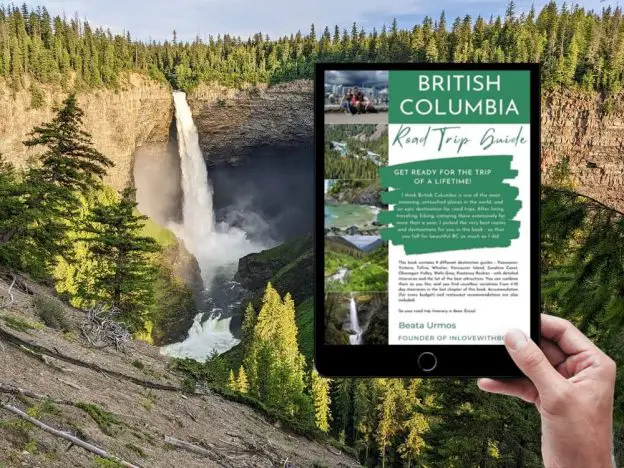
BC Trip Planning is Overwhelming. So We Did It For You.
Our compact guide delivers step-by-step itineraries to BC’s best sights and hidden gems.
We’ve written quite a few articles about different towns and regions, read them here:
